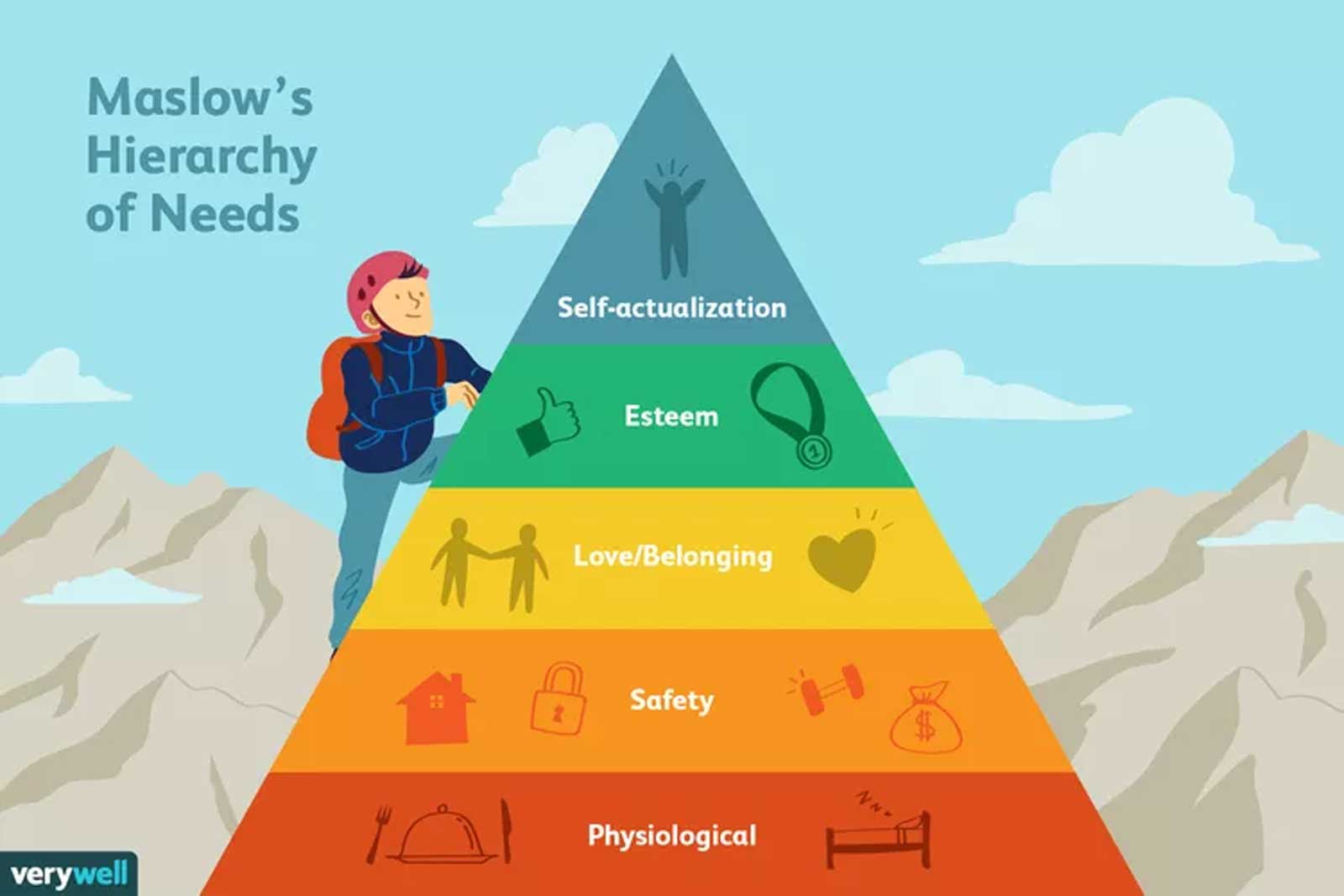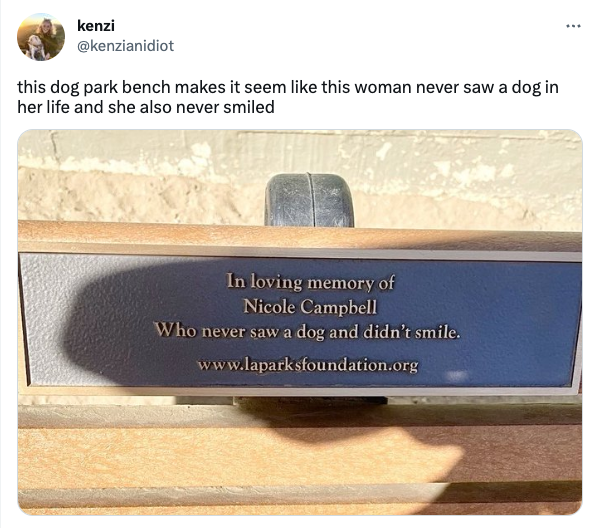Welcome to another week!
I know. The logo is weird. That was my best attempt at using Mount Rushmore as a mask for the DC logo in celebration of President's Day in the US. This week we cover free invites, "so what?", and network bootstrapping.
Special thanks to our sponsors Vanta, and Ali Abdaal for making this newsletter possible. We're a small bootstrapped company and they help keep the newsie going. As always, if you don’t find this valuable, you can unsubscribe at the bottom of this email. If you like it, tell your friends to subscribe here. It's the number one way to support the newsie. – Neal |
Together with Vanta Compliance doesn’t have to be complicated. In fact, with Vanta it can be super simple.
Trusted by thousands of SaaS companies, Vanta automates the pricey, time-consuming process of prepping for SOC 2, ISO 27001, GDPR, and more. With Vanta, you can save up to 400 hours and 85% of costs. Win more deals and enable growth quickly, easily, and without breaking the bank. For a limited time, new customers get $1,000 off. |
|
|
Want to sponsor Demand Curve? Here's what you need to know (updated!) 1. Let users invite others for free. Charge later.
Insight from Kyle Poyar.
Figma has quickly become one of top design tools. Partly because it was the first Sketch-like design tool to double-down on web. And it's inherently viral. I send you a link to our Figma file, we start collaborating immediately.
Figma makes this process even smoother with their permissions and billing.
1️⃣ Editors (basic users) can add new editors to their team at any time and at no upfront cost. This allows folks to share designs, get feedback and move quickly without admin approval.
2️⃣ If the number of editors exceeds the current plan, admins get an email a few days before the next bill is due, and highlights any new editors that joined.
3️⃣ The admin can then decide to remove these new editors before the next billing cycle. BUT they're way less likely to now for two reasons: - Loss aversion: It's psychologically harder for them to remove access from someone than to say no in the first place.
-
Effort: It requires the admin to actively remove someone. Often, people are busy and don't get to it—or don't bother since it's only $12/mo.
This makes it: - Easier for users. They can invite folks without waiting for admins.
-
Easier for admins. They don't have to invite everyone. They can batch remove people as needed each month. And they get a free month for each user.
- More revenue for Figma.
|
2. Dimensionalize to reach your product’s core benefit
Insight from VeryGoodCopy. Good copywriting isn’t about glorifying your product or exaggerating its features. It’s about getting people to understand your product's core benefit. Only then can they consider becoming a customer.
You can reach that core benefit through dimensionalization. That involves identifying a key feature and then asking, “So what?” not just once, but again and again. Keep asking, “So what?” until you reach one of these desires: -
Physical: Food, drink, warmth, and shelter
- Safety: Security and safety
- Belonging and love: Companionship and intimacy
- Esteem: Feelings of success and superiority
-
Self-actualization: Achieving one’s full potential
|
Maslow’s Hierarchy of Needs describes our fundamental needs as humans. Dimensionalizing helps connect the dots between a product feature and at least one of these underlying desires.
Here’s an example of dimensionalizing: Product feature: A fine art print that comes in extra large dimensions -
So what? The XL sizing makes the print the focal point of any room in your home.
- So what? The print commands everyone’s attention.
- So what? It becomes a conversation piece whenever guests are over.
- So what? You can show off your knowledge about the artwork.
-
So what? You’ll impress your guests—earning you esteem from their social approval as well as your own feelings of success.
|
3. Bootstrap your LinkedIn following
Insight from Nikos Ntirlis. LinkedIn is getting hotter and hotter each year. And one of the great things about LinkedIn (unlike other social platform) is that you can bootstrap your first followers by sending connection requests. Databox’s Nikos Ntirlis shares how: #1) Make a list of the people you want to connect with—potential customers, influencers, partners, affiliates, etc.
Pro tip: Choose people with a similar audience size as you. If you have 1,000 followers, someone with 3,000 is way more likely to accept than someone with 300,000.
#2) Read their posts and check out their website. The goal is to identify the topics that interest them and their communities.
#3) Thoughtfully engage with them. That includes commenting on their posts, responding to their comments on someone else’s, and quoting and tagging them in your own posts. Do this several times over the course of a few days or weeks. Pro tip: Prioritize commenting on viral posts. You'll get more organic followers.
#4) Send a connection request after your targets respond. They'll be way more likely to accept than if you did it cold. Why?
Because they recognize your name, have started to develop a relationship with you, and want you to keep engaging with their posts (so you help amplify their reach).
Note: you can also comment on people commenting on their posts, and send connection requests to them. Just be careful to only send up to about 20 per day to avoid being suspended by LinkedIn. And even if your targets don’t accept your connection request, interacting with their content can get you exposure to their audience. Want more insights about growing your LinkedIn presence organically? Check out our comprehensive playbook. |
4. YouTube is more predictable than you think Sponsored by Ali Abdaal.
That being said, social media is ephemeral. A post is lucky to last 24 hours. Yet YouTube videos can build in traffic for years. Wish you could crack the code to YouTube growth? A lot of gurus and experts make it more complicated than it really is. Growing on YouTube is just a matter of: - Creating videos that people find valuable
-
Posting them on YouTube at least once a week
- Repeating this for at least 2 years
The issue is a) it’s hard to do it alone, b) it takes a ton of time and c) you often don’t know where to start or what to do next. That’s why less than 1% of all YouTube channels have over 100,000 subscribers and the numbers are even more brutal for brand channels. So, what’s the solution? Ali Abdaal, an educational YouTuber with 3.8M subscribers, has just opened the enrolment for his last-ever live cohort of the Part-Time YouTuber Academy. It’s a 4-week live online course where you'll learn to grow your channel from 0 to 100,000+ subscribers and transform it into a sustainable, income- and awareness-generating machine.
Join me (Neal) in the cohort. I’ll be doing it this year to learn how to bring DC to YouTube. Since enrollment opened last Monday, 80% of available spaces have been taken. Grab one of the remaining spots here or read more about the course, when it starts, and all the things that Ali and his team have prepared for you. |
|
|
News you can use:
Instagram just launched "Channels," a group messaging feature that lets creators and brands slide into their followers' DMs at scale. Meanwhile, IG will shut down its live stream shopping feature on March 16, 2023 to instead focus on ads.
Meta announced their new paid verification service, "Meta Verified", which promises increased visibility, customer support, and other perks for a monthly fee.
Bing ads are coming to the Bing chatbot experience. Soon, Microsoft's AI-fueled search option will allow paid links and contextual pop-ups around relevant queries.
Snap, at its investor day, announced that Snapchat now has 750 million+ monthly active users (up 25% from April 2022), and their Snapchat+ $3.99/month subscription has 2.5 million subscribers. The company also said it will focus more on its direct response ads business moving forward. -
DC is launching a podcast this year! Answer our quick survey to help us make it your favourite podcast.
New video course: Brand marketing is increasingly taking center stage. In a world of cheap AI-generated content, who is saying it becomes increasingly important. Your brand is your company's public identity.
And a strong brand makes all marketing easier. It increases word of mouth, and decreases acquisition costs.
Last week we launched our Brand Strategy Sprint—a laser-focused video course on how to build an impossible-to-forget brand. Only 35 spots left in our initial launch. |
|
| Top new marketing jobs
If you're looking for a top growth role, check out the opportunities below from our job board. |
|
|
What did you think of this week's newsletter?
Loved it | Great | Good | Meh | Bad
If you enjoyed this, please consider sharing it with a friend. The number one way to support us is to share us with fellow founders and marketers.
Who's Demand Curve? We’re on a mission to help make it easier to start, build, and grow companies. We share high-quality, vetted, and actionable growth content as we learn it from the top 1% of marketers. We democratize senior growth knowledge. How we can help you grow: -
Read our free playbooks, blog articles, and teardowns—we break down the strategies and tactics that fast-growing startups use to grow.
- Enroll in the Growth Program, our marketing course that has helped 1,000+ founders get traction and scale revenue.
Check out our Sprints: short video courses that are laser-focused on a topic in growth.
Want to build an audience of buyers? Join the waitlist for the Un-Ignorable Challenge. -
Hire our agency, Bell Curve, and we'll grow your startup for you.
Engage with our audience by sponsoring Demand Curve.
See you next week.
— Neal, Grace, Joyce, Dennis, and the DC team. |
|
|
© 2023 Demand Curve, Inc. All rights reserved. 4460 Redwood Hwy, Suite 16-535, San Rafael, California, United States
Unsubscribe from all emails, including the newsletter, or manage subscription preferences. |
|
|
|







